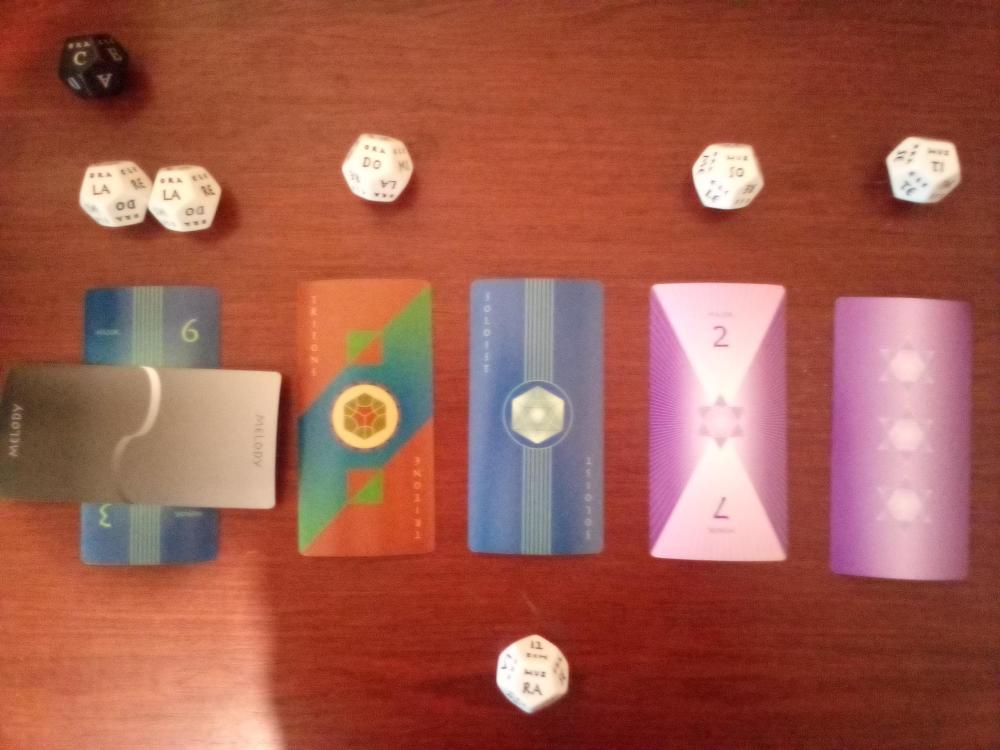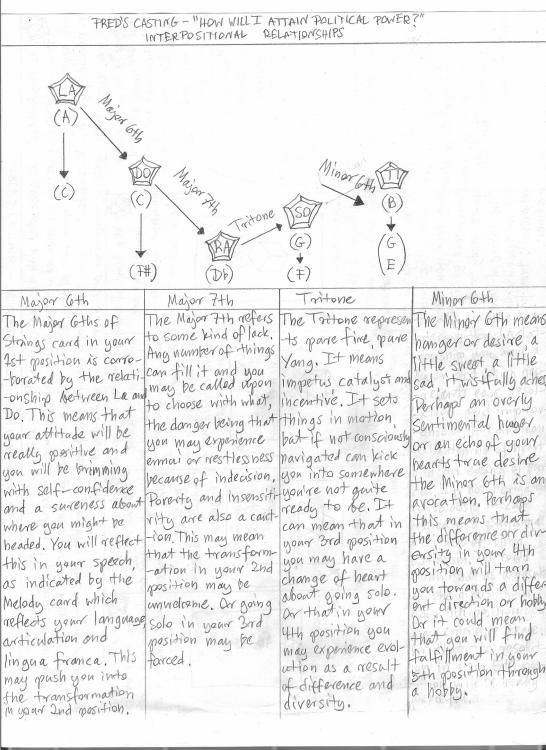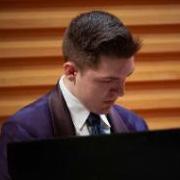All Activity
- Past hour
-
I think it's a pretty good piece of music, so I'm satisfied with the result... 😄 It seems that blatantly copying someone's style is not my real superpower at all... Thanks again!
- 10 replies
-
- 1
-

-
- piano music
- romantic music
-
(and 2 more)
Tagged with:
-
In the beginning and throughout the piece you set a consistent mood, which for me makes it sound like VGM. But then the way you use rhythms and ornaments from 0:46 on makes it sound more Baroque to me.
- 10 replies
-
- 1
-

-
- piano music
- romantic music
-
(and 2 more)
Tagged with:
-
Anyway, jokes aside, maybe I’m just being ignorant, but lately I’ve been listening to a lot of Baroque music, and the trills in those pieces sounded more like groups of four sixteenths or thirty-seconds rather than triplets, the way I used them, or sometimes they had an even more intricate structure. But I could be wrong about that. To me, my piece doesn’t sound particularly Baroque, neither melodically nor harmonically. I actually feel it’s more Romantic than Baroque, though it’s true that it’s not really Chopin-like or Liszt-like either. Does it remind you of the Baroque style? Which part exactly? Thanks again!
- 10 replies
-
- 1
-

-
- piano music
- romantic music
-
(and 2 more)
Tagged with:
-
chopin started following Fred's Casting - "How will I attain political power?"
-
Fred's Casting - "How will I attain political power?"
chopin replied to PeterthePapercomPoser's topic in Chamber Music
Fun motif, and interesting instrument choices. I like how you abruptly change the mood from fast, upbeat -> slow and dramatic. This is the same technique I use in my Mario musicals actually. I make Peach seem all innocent and sweet, then the next scene, BAM, I have her change her attitude. I feel that this technique adds a shock value for the listener or viewer. You are doing the same thing with your harmony and rhythms by abruptly shifting both, which keeps the music unpredictable. Even though your music is unpredictable with that regard, it's still well structured, and easy to follow.- 1 reply
-
- 1
-

-
PeterthePapercomPoser started following Fred's Casting - "How will I attain political power?"
-
Perhaps my most intriguing Muzoracle casting to date - Fred asked the Muzoracle "How will I attain political power?". (Muzoracle is a storytelling/divination tool similar to the Tarot card deck, but with cards with musical concepts and 12-sided Musician's dice and Solfege dice.) My interpretation of the cards and dice are displayed below. Since two strings cards were dealt in the 1st and 3rd position, I used Violin and Cello. In the 2nd position I dealt a Tritone of Percussion so I used a Clavichord. In the 4th and 5th positions I dealt a Major 2nd and a Triad of Voices, so I used choir. If you'd like to find out more about Muzoracle and how castings are interpreted go here: https://muzoracle.net/ This short musical interpretation of Fred's Casting is about a minute and a half long. The piece is in C major since the black musician's die landed on C. I then made the following melodic/harmonic underdrawing that I used in the composition of the music. To fill out the piece harmonically I included Roman numeral interpretations of each of the dyads/positions in the casting. Since the piece starts with strings I used Violin, Cello and Harpsichord in the first three positions. The voices then come in on the 4th and 5th position. The Triad card is normally supposed to be interpreted as a major triad, but since this was a descending casting and the position where the triad card was dealt was descending I decided to interpret it in a negative harmony way, inverting the intervals of the triad downwards, thus producing an E minor triad based on B (Ti). Then, to conclude the piece I reversed the order of the chords in retrograde fashion to land back on the first chord at the conclusion, but reinterpreting it harmonically as a C major 6 chord. I also reinterpreted the triad as a major triad ascending from B (Ti). If you've gotten this far, thanks for reading! And I hope you enjoy listening to this short chamber work I wrote to represent Fred's Casting. Comments, critiques, suggestions, or observations are of course, always welcome. Thanks for listening!
-
But I invented the baromantic style. There's nothing wrong with that! I'm an innovator...
- 10 replies
-
- 2
-

-
- piano music
- romantic music
-
(and 2 more)
Tagged with:
- Today
-
Is stave is what I know there are only two of them here😂
-
Hi again @olivercomposer! I think with the way you're using the ornaments and little trills here and there, to me it sounds more Baroque now! LoL
- 10 replies
-
- 2
-

-

-
- piano music
- romantic music
-
(and 2 more)
Tagged with:
-
TristanTheTristan started following Romantic Piano Short | Liszt & Chopin Inspired Music
-
Hi there! Nice piece. Critique here. So anyways, make it more difficult and virtuostic. add fast octaves, fast runs, octave glissandos, octave grace notes. chords, and key changes. Don't miss out on tempo changes like in the following way either: Change to dominant with ritarlando, then faster tempo, something like tempo de marcia. Then you can in someway come back to this first theme, or do something else. It is fully your own choice. You could have a clear theme at the start like you had, and 'secretly' bringing the theme back in someway later. (e.g. left hand octaves with the theme while the right plays fast runs or fast arpeggios or something). Try using more contrasts, like from piano, to sforzando. Also, lastly, try avoiding the dominant at the very start. Try first developing the theme, and then going to the dominant. Anyways, good job, and keep on composing!
- 10 replies
-
- 1
-

-
- piano music
- romantic music
-
(and 2 more)
Tagged with:
-
Link fixed: Tintinnabuli. (I): Essentials Tintinnabuli (II): T voice Tintinnabuli (III): M voice Tintinnabuli (IV): Adding T voices Tintinnabuli (V): Adding M voices Tintinnabuli (VI): Adding complexity Tintinnabuli (VII): Addendum
-
Henry Ng Tsz Kiu started following Romantic Piano Short | Liszt & Chopin Inspired Music
-
TristanTheTristan started following Idea no.0
-
MP3 Play / pause MY_MUSIC_058_20251104_163157_164052521 0:13 0:13 volume > next menu MY_MUSIC_058_20251104_163157_164052521 > next Does this prelude have like... I don't know... Nine staves?
-
Requiem pro mundo moriente
Alex Weidmann replied to BipolarComposer's topic in Orchestral and Large Ensemble
Not in any great detail no. I do have a score somewhere that shows which passages were completed by Süssmayr. I always feel this is the most contrapuntal of Mozart's major works (not unlike his "Little Fugue"). Seems to me that Handel was a major influence. Some passages from his "Messiah" sound very similar to the Mozart/Süssmayr Requiem. I don't know any of Michael Haydn's works; but I'm sure you're right, and will take a listen. -
I rewrote the piece a bit, added some ornaments, tempo changes, and a few runs. I think this version feels more like it could’ve come from the Romantic era. What do you think?
- 10 replies
-
- 1
-

-
- piano music
- romantic music
-
(and 2 more)
Tagged with:
-
I rewrote the piece a bit, added some ornaments, tempo changes, and a few runs. I think this version feels more like it could’ve come from the Romantic era. What do you think?
- 10 replies
-
- 1
-

-
- piano music
- romantic music
-
(and 2 more)
Tagged with:
-
JP S. started following Infinity - Marching Band Show
-
Hey Nicholas! I can’t remember if I posted on one of your pieces before, but I also compose marching/pep band pieces and I want to support that as much as I can since there are so few on this forum. Anyway, I think you have some great ideas. Wanting to start with a mellow intro, using different ostinatos and layering them in, entering percussion, then building to a big hit. I think all those ideas are nice. I also like that you had a cohesive vibe throughout the piece. It felt very Tron -esque, robotic and repetitive, and the synth helped that atmosphere. I hesitate to say this, because I think most often this isn’t the highest quality option, but here’s my opinion and taste and you can definitely disagree with me. I think you would write a higher quality piece if you delved into your theme a little more and started from scratch. I say this because sometimes the minimalist, repeated short bits actually come off as boring. My MB did a show that was “minimalist” my Senior year, and it also felt boring and repetitive to me. With your theme of infinity, I think you could easily delve into the idea of moving through time & space endlessly, but in a way there’s still change. Like not an infinity of just repetition (ex. carrying an ostinato throughout the whole piece), but an infinity where a motif is consistently repeated but differently, a canon. You may be able to keep the intro in an ethereal light still, because I think that kind of weightlessness also conveys infinity. Also, something that I hear even DCI writers struggling with is creating a piece that feels like a cohesive whole, including the big hits. The hits often feel not led up to properly, not exited in a fitting way, or they don’t match the overall style of the piece. See what you can do so the hits feel anticipated in some respect, and that they match the style, including tension and resolution. Cheers, and happy composing
-
Thanks for your comment, it helped a lot! The roulades and fioraturas are good ideas!
- 10 replies
-
- 1
-

-
- piano music
- romantic music
-
(and 2 more)
Tagged with:
-
Henry Ng Tsz Kiu started following WIP - First Piano Concerto (Feedback Wanted)
- Yesterday
-
Hey @olivercomposer! Nice piano piece! I don't think it's very Chopinesque or Lisztian - but it certainly sounds like Oliver Kovacs! I think your chord progressions are very unique to you and to your by now well defined cinematic style of composing! If you wanted to make it more Chopinesque you could have included more rubato and long drawn-out roulades or fioraturas. Liszt's piano technique is also quite a bit more difficult. But I really enjoyed this piece of music! Thanks for sharing!
- 10 replies
-
- 1
-

-
- piano music
- romantic music
-
(and 2 more)
Tagged with:
-
Hey @MK_Piano! Great ideas so far! I think what I find confusing about the beginning of your main theme (after the short 4 measure introduction), is that at first it seems like you start the piece on an accompanimental one measure vamp in the strings. So the phrase actually seems to start on measure 6 in the Bassoons. That serves as the antecedent phrase of a musical period. It lasts for 4 measures from bar 6 - 10. That's just fine and dandy, but then the consequent phrase doesn't come in until measure 11 in the Bassoons once again. So it seems like you might be including that one measure vamp again as part of the phrase, in which case it becomes an acephalic five measure phrase. I know Haydn and even sometimes Mozart were known for writing five measure phrases. I am not sure if it is working here. If you are happy with it - definitely keep it! But to me it would sound better if you concatenated the phrasing so that the consequent phrase would start at bar 10. This confusion about the phrase lengths continues into the 2nd iteration of the phrase at measure 18. The phrase starts right on beat one, so this time its not acephalic. But then it continues for five measures from measures 18 - 23 with a slight 3/4 hemiola that's then concatenated to terminate on beat one of measure 23. To me this definitely starts to sound awkward and confusing in the phrasing. When I first listened to the piece without looking at the score, it sounded like you changed meter to 3/4 and then abruptly back to 4/4. I felt lost as a listener, not knowing where the phrase was going rhythmically. So although kinda awesome, the piece does have many structural flaws that confuse (at least this) listener. When the piano comes in on the theme later on in the piece (solo), you do concatenate the phrases to 4 measure phrases and I think that does kinda work better. But I think as far as the big form and macro-tonal plan is concerned, the piece seems to repeat too much. I think if you had included the contrasting 2nd theme in the exposition before doing a 2nd exposition with the piano that would have made more sense. But I have personally never written a piano concerto in sonata form before - I've just written two theme and variations pieces for piano and orchestra. So all my experience is in concertante type piano concerto writing. Thanks for sharing and I hope some of what I had to say was helpful/useful!
-
Requiem pro mundo moriente
Churchcantor replied to BipolarComposer's topic in Orchestral and Large Ensemble
Cool! Have you ever studied the manuscript to see how much of it Mozart actually wrote? Only movement fully orchestrated by Mozart was the first movement, the Introitus. He got about halfway (Hostias/Quam Olim) with only vocal parts, figured bass, and suggestions of first violin figurations. I love it, but prefer to call it the Mozart/Süssmayr Requiem! Highly influenced by Michael Haydn's Requiem, and that one and even Salieri's are worth a listen. Start here: I like Costas Court Composer; he basically writes Haydn symphonies that sound like Haydn, middlin' Haydn anyway. Nice guy, and when I asked if he were Joseph Haydn, or Michael, in a past life, he thought it was pretty funny... -
Requiem pro mundo moriente
Alex Weidmann replied to BipolarComposer's topic in Orchestral and Large Ensemble
By sheer coincidence, I just went to a performance of Mozart's Requiem tonight! -
Hey everyone. I have been going back and forth on my first piano concerto for a long time. Unfortunately, I reached a point where my original design has acted as a roadblock for me to finish the first movement. I decided to restart the work and compose from scratch. I will add more context below, however as an introduction, this excerpt is the entire exposition of my first draft. It is five minutes long and I wish to have it preserved here on YCF. So, sit back, and follow along to the work-in-progress of my first concerto! 🎹 ________________ CONTEXT AND FEEDBACK: I started this project back in June 2024 when I improvised the first theme in one of my practice sessions. I fell in love with it and immediately knew I found a theme worthy for a concerto. I am sticking to late classical (and possible romantic hints) for this work. Hummel, Shostakovich, and Rachmaninoff are the main three sources of inspiration for my orchestration. It follows Sonata-form, however using three themes (1st, 2nd and closing theme) in the exposition. Recently, as I have been diving heavily into the works of Mozart, Haydn and Beethoven, it has dawned on me the level of sophistication each composer had in their writing. How Beethoven would use elements of the first theme to make his second theme, and later use the first movement as basis for theme and variation writing or fugal writing in his third movements. So, after a break in the first half of the year, I have been looking at this exposition and tried to add sophistication. However, I noticed so many gaps in the structure. As it stands, it feels like a compilation of several themes versus one long work showcasing the transformation of the motif and form. As a result, I have stopped working on it and grabbed a blank manuscript and wrote down the key three themes I want to use. I have yet to start rewriting, as I want to give my brain a break and simply ask for feedback. I would appreciate comments on form, orchestration and anything you deem fit. Please do not hesitate to be blunt either! (I may try to write pure double exposition instead of this quasi-expo before the first piano cadenza.) Thanks in advance!! 🙂 _________ EDIT: There is no English Horn in this work so far. I used my Orchestral template and forgot to remove the English Horn from the instrumentation page. Also, The score is NOT TRANSPOSED; it is a concert score)

.thumb.png.8b5b433a341551e913a34392660bc95b.png)





